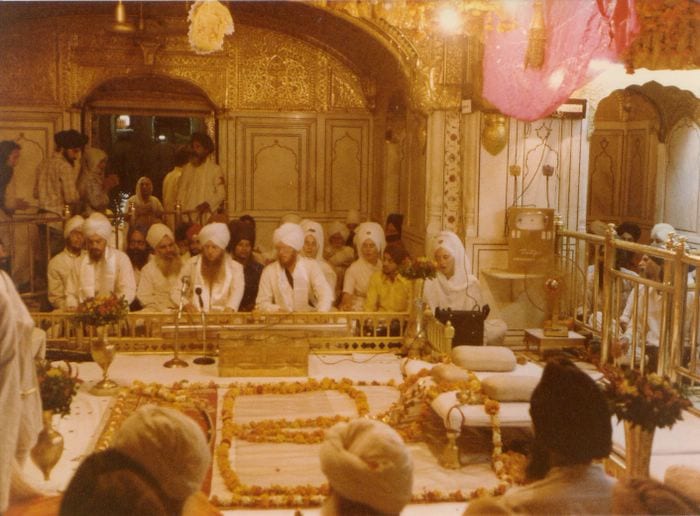ਧੌਲੁ (dhaul)
Meaning: noun: Literally white, the white bull, which was believed to be supporting the earth.
Quote:
ਧੌਲੁ ਧਰਮੁ ਦਇਆ ਕਾ ਪੂਤੁ॥
dhaul dharam da-i-aa kaa poot.
The white bull (believed to be actually supporting the earth) is dharam, which is the offspring of compassion i.e. dharam borne out of compassion is the support upholding the earth. – Guru Nanak Sahib, Guru Granth Sahib, Page 03
Message: The Guru here introduces and reformulates the myth of the white bull which is supposedly carrying the weight of the earth on its horns. In his inimitable teaching style, Guru Nanak questions how is it possible for a bull to carry the weight of the earth? And if we were to believe that, who is supporting the bull? We get into an infinite regression.
Guru Nanak tells us that the bull is actually a metaphor. It is righteousness (dharam) which springs from compassion (daya) that holds all creation together. Along with these virtues, it is contentment (santokh), which keeps the world in balance.
The lesson is that each one of us is morally and ethically obligated to support creation in all its dimensions by aligning to these virtues. Compassion is the fount of all virtues and must be exercised with a deep sense of contentment. This alone will ensure a stable society.
Those who understand this know the Truth.
Kindness is the golden chain by which society is bound together. – Johann Wolfgang, a German writer and statesman, 1749 –1832
Keen to Explore Further?
If someone tries to describe or deliberate on the Creator or creation, it would be impossible to make a summation. For example, when it was difficult to comprehend what held or supported the earth or other planets, this gave birth to the myth that a white bull supports the earth on its horns. Whenever the bull shifts the load of the earth to another horn, it results in earthquakes.
If one understands that virtues such as, righteousness, compassion and contentment, etc. are upholding the world, then one realises the truth that it is not the bull but divine virtues or divine laws that are keeping the universe in balance.
Otherwise, the Guru says, how much weight there must be on the bull if indeed it is the bull that is supporting the earth. There must then be another earth for the bull to stand on and another bull to support that earth in turn and so on. On what platform then is the last bull standing to bear the immeasurable weight of these numerous earths and bulls above it?
Dharam, a term that Guru Nanak introduced in stanza 14, is re-visited here with a little more elaboration. The concept of dharam has an ancient lineage in Indian and Buddhist thought. Broadly speaking, dharam was used to mean the way things are, or the natural order of things or that which sustains the universe, natural law; but a second, narrower meaning also came to be attached to it: duty, or one’s role in society.
Guru Nanak uses the term in the sense of that which sustains the physical universe; but he also seems to use the term to denote moral and ethical law as well, where dharam is the product of compassion.
An understanding or alignment with dharam is the key to becoming a sachiaar, which, as we have repeatedly seen, is the purpose of human life.
Etymology: From Sanskrit dhaval (dazzling white) → Pali → Prakrit dhaval (white) → Sindhi dhauro, and Punjabi dhaulaa (white).




